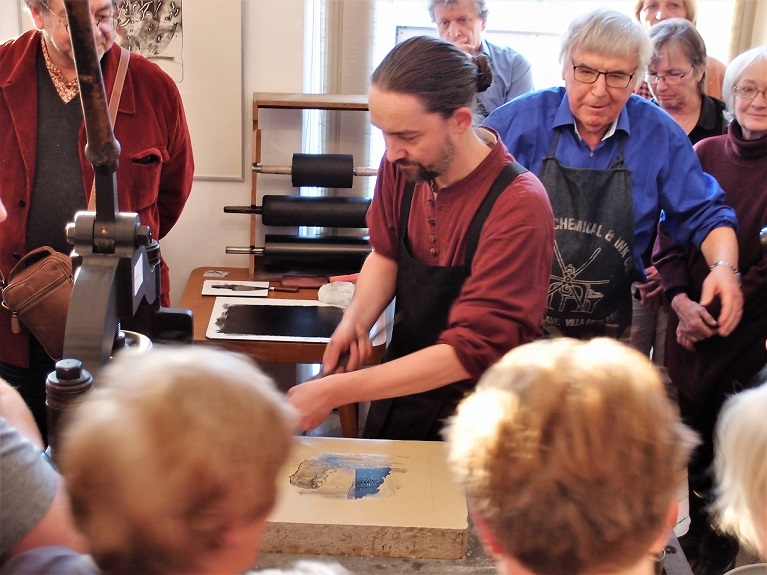I am embarrassed to say that until this year I had never visited Galerie Hollar in Prague and yet it is so up my street. As regular readers will know I am a fan of Czech graphics and Galerie Hollar is the gallery of the Association of Czech Graphic Artists. The Association celebrated its centenary last year.
The gallery is to be found just along the embankment from Cafe Slavia and the National Theatre. It is not particularly well signposted so it is possible to walk straight past the entrance of what looks like a large town house. Inside there is a small gallery with changing exhibitions and a shop. The size of gallery is just perfect for me. I don't like feeling overwhelmed by displays and visitors jostling to look at the artworks.
The exhibition we visited was by the Czech artist, Vladimir Suchanek, whose work includes exlibris and larger prints. I have only one of his works in my collection (below) and would love some more. The ones for sale in the Hollar eshop are too expensive for me, no matter how much I covert them. Suchanek has a fascinating style. His preferred technique is coloured lithography, which he explores constantly.
Suchanek's other love is music. With fellow members of the Association, Jiri Anderle and Jiri Sliva, he founded a band called Grafieanka!
The gallery is usually open Tuesday - Sunday 10-12 am and 1-6 pm.












